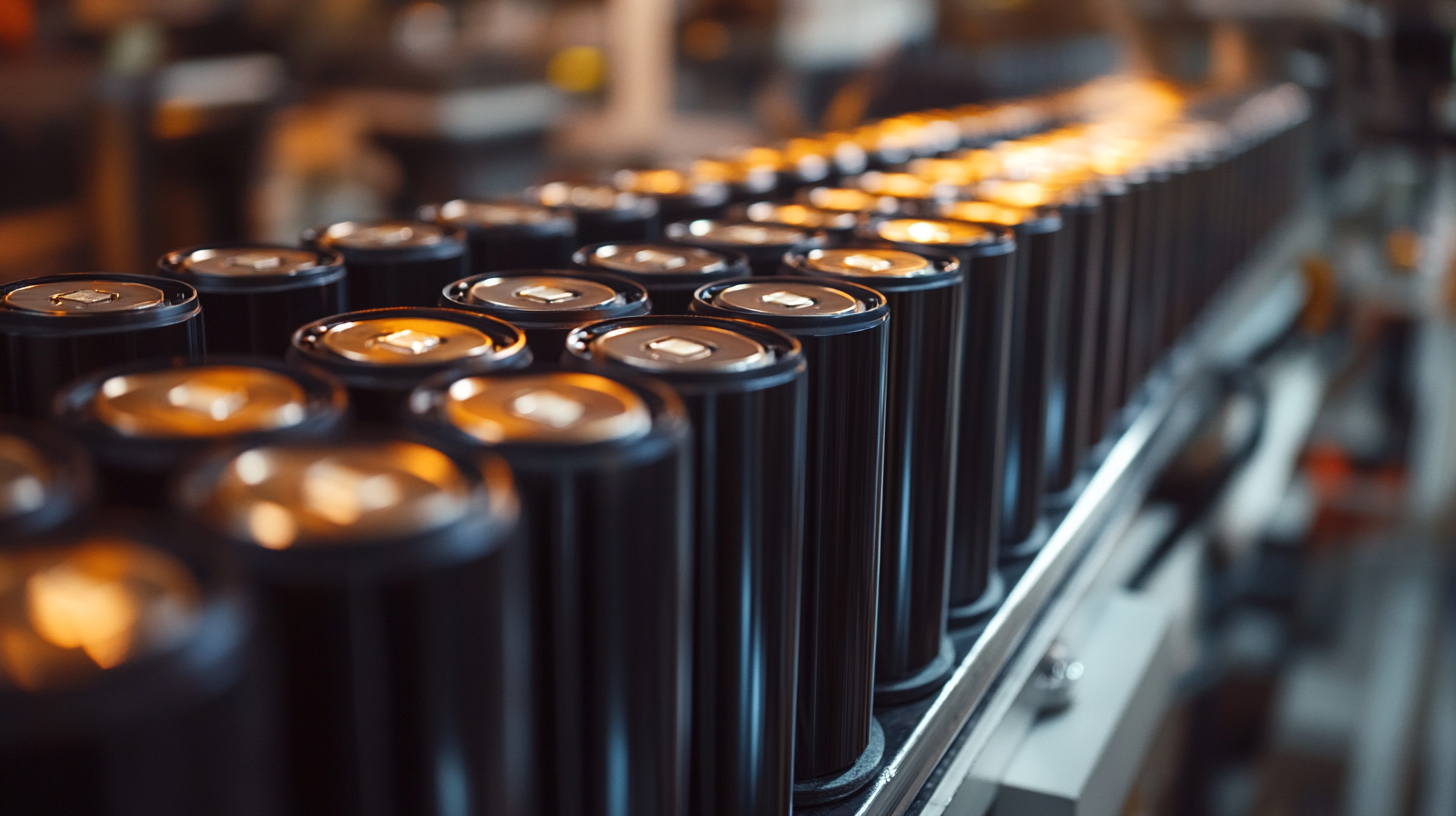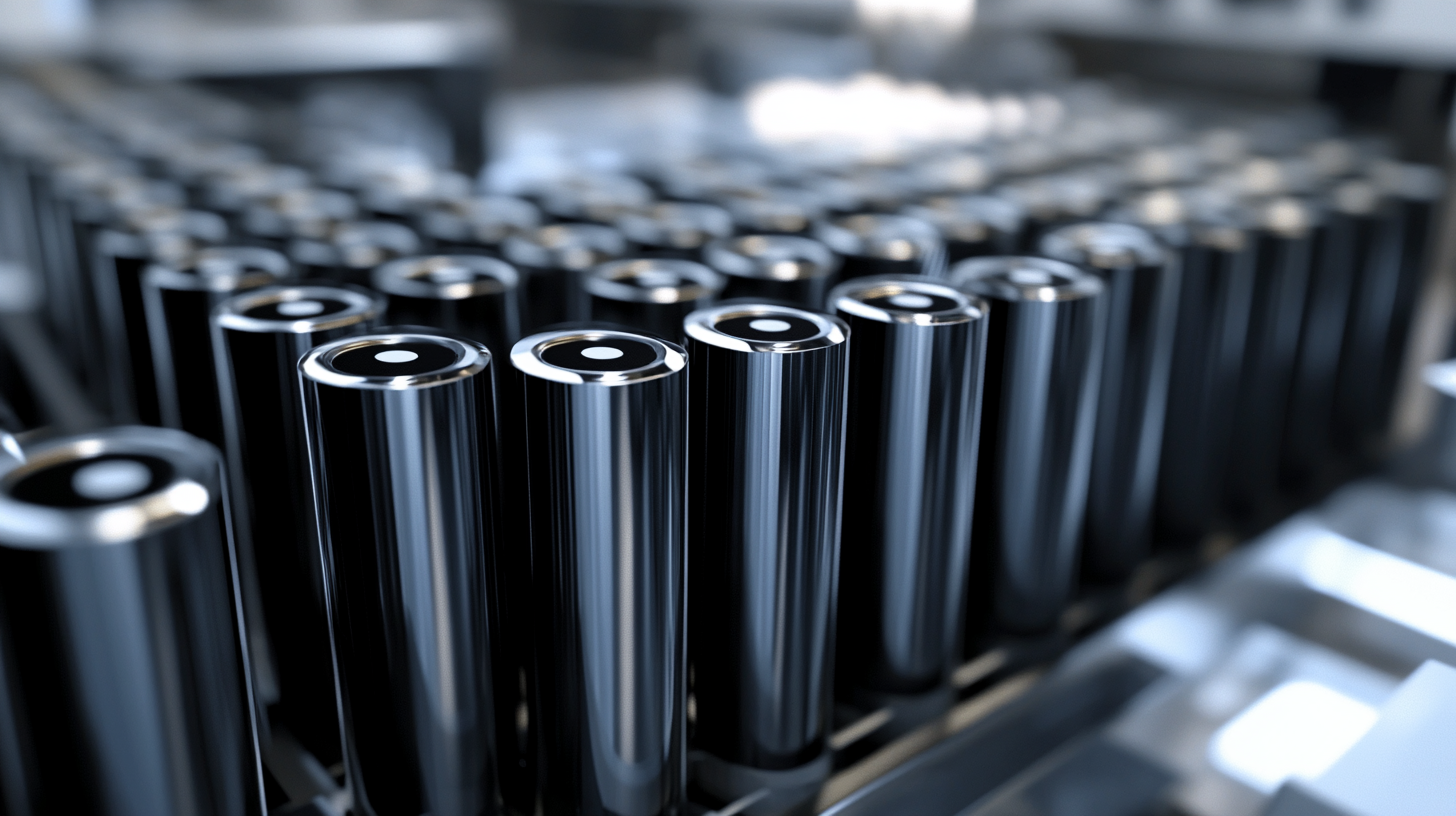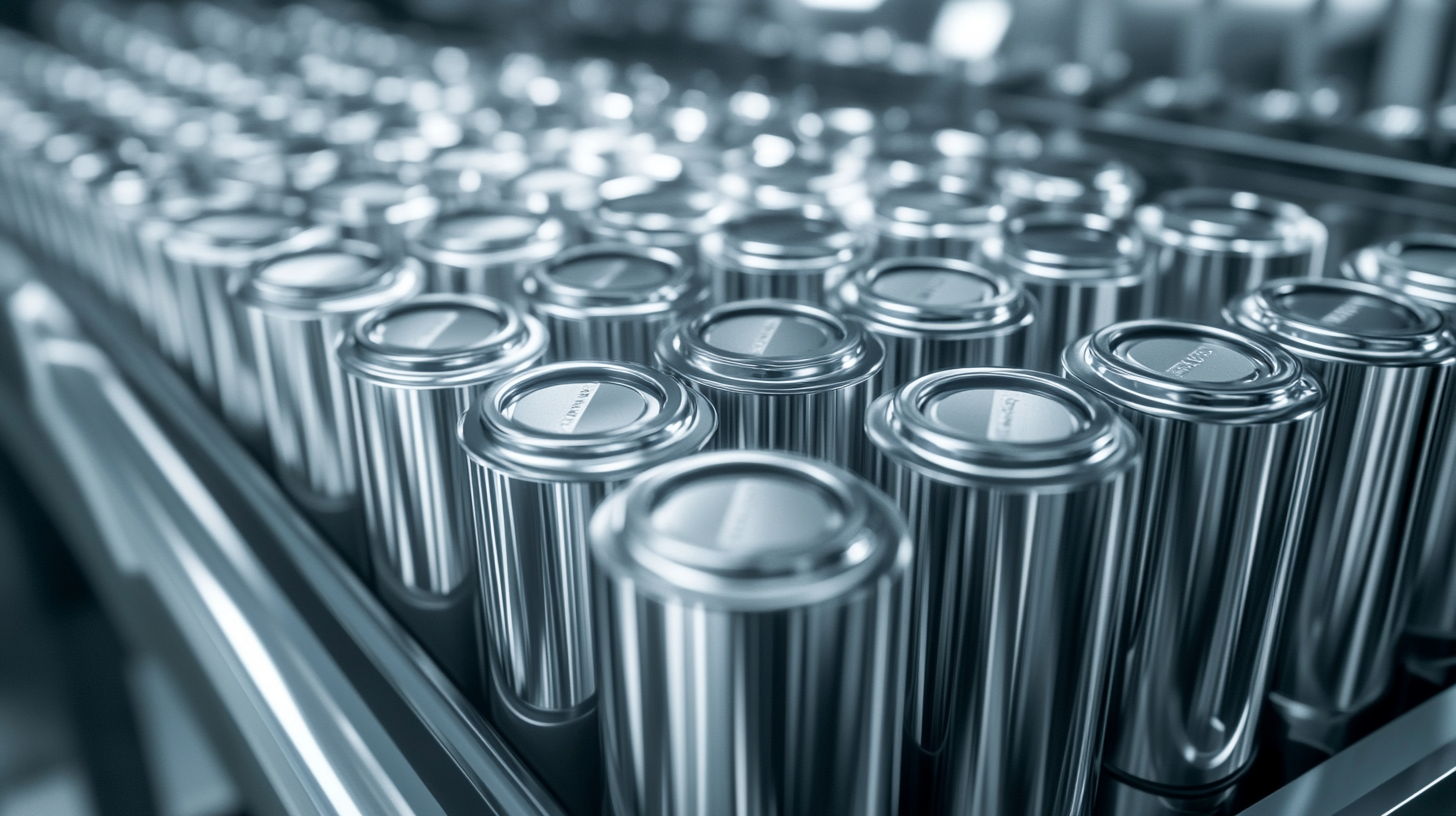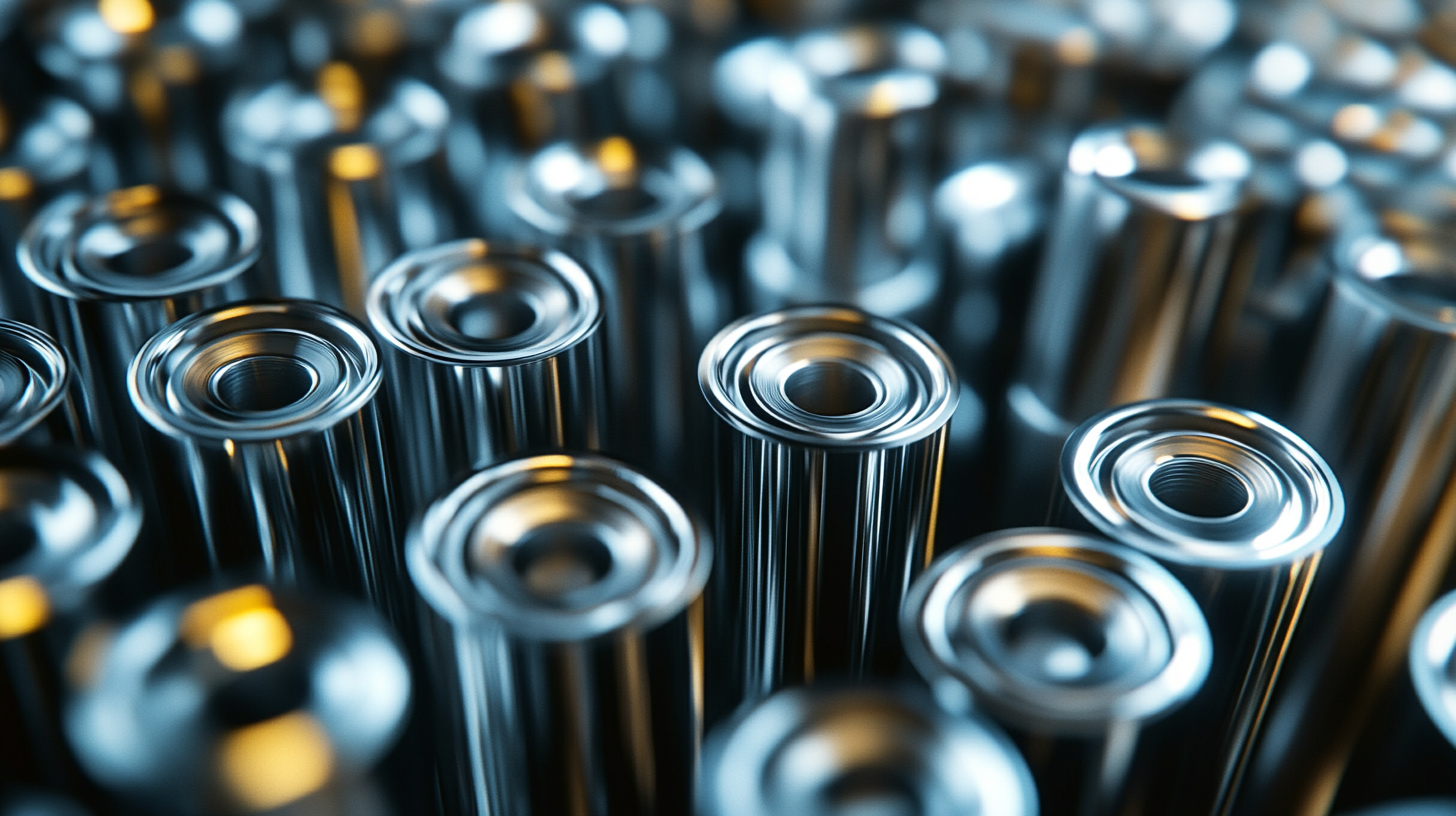Leave Your Message
The advancements in battery technology have seen a significant shift towards the production of cylindrical lithium-ion batteries, particularly the widely used 18650 cells. These compact and efficient energy storage solutions are crucial for a myriad of applications, from electric vehicles to portable electronics. According to a recent market research report by Grand View Research, the global lithium-ion battery market is expected to reach USD 129.3 billion by 2027, growing at a compound annual growth rate (CAGR) of 17.0%. This surge in demand has led manufacturers to invest heavily in specialized production lines, including the 18650 Cylindrical Battery Pilot Line, aimed at enhancing efficiency, reducing costs, and improving quality control in the manufacturing process.
As industries continue to embrace sustainable energy solutions, the importance of mastering the manufacturing processes of cylindrical batteries cannot be overstated. The 18650 Cylindrical Battery Pilot Line is at the forefront of this revolution, enabling companies to optimize production techniques and explore innovative applications. With features such as automation, real-time monitoring, and advanced material handling, pilot lines are not just about increasing output but also about refining the production cycle to meet stringent energy density, safety, and performance standards. Understanding the unique features and various applications of these production lines will be essential for stakeholders looking to capitalize on the growing market for energy storage solutions.

The production lines for 18650 cylindrical batteries are intricate systems designed to manufacture high-performance energy cells widely used in various applications, from electric vehicles to consumer electronics. Key components of these production lines play a crucial role in ensuring efficiency, quality, and scalability. One of the primary components is the electrode coating machine, which applies a precise layer of active material onto the metal foils that will become the battery's electrodes. This step is vital as it directly influences the energy density and performance of the finished battery. Advanced coating technologies have enhanced the uniformity and thickness of the layers, enabling better performance consistency. Another critical part of the production line is the winding machine, tasked with spirally winding the coated electrodes with a separator to form the cell assembly. The precision of this process impacts not just the battery's capacity but also its safety and lifespan. Sophisticated winding machines can automate this process, significantly increasing production speeds while minimizing defects. Lastly, the introduction of advanced quality control systems ensures that each battery meets stringent safety and performance standards. Automated inspection technologies, such as optical and ultrasonic testing, are integrated into the production line to catch defects early, thus ensuring the reliability of the final product. Collectively, these components reflect the complexity and innovation involved in manufacturing 18650 cylindrical batteries, underpinning their role in powering a wide array of modern technology.

The 18650 cylindrical battery has become a cornerstone in various applications ranging from consumer electronics to electric vehicles, propelling the demand for efficient and innovative manufacturing processes. In recent years, advancements in technology have revolutionized the way these batteries are produced, emphasizing precision and quality control. The integration of automation and artificial intelligence in production lines allows manufacturers to optimize each stage of the battery life cycle, from raw material preparation to final assembly.
One notable innovation in the 18650 battery manufacturing process is the use of advanced coating techniques. These methods improve cycling stability and increase energy density, providing a competitive edge in the market. Additionally, the adoption of robotic systems minimizes human error and enhances operational efficiency. The synergy of these technologies not only accelerates production rates but also ensures that each battery meets stringent quality standards.
Moreover, the development of data analytics tools has enabled manufacturers to monitor and analyze production metrics in real-time. This capability allows for immediate adjustments to be made, significantly reducing waste and increasing yield. As the push for sustainable practices in manufacturing continues, these technological innovations are crucial for meeting the growing demand for high-performance batteries while minimizing environmental impact. The evolution of 18650 battery production lines reflects a broader trend in the industry toward smarter, more efficient, and environmentally friendly manufacturing practices.

Quality control is an essential aspect of the production process for 18650 cylindrical batteries, given their widespread use in various applications, including electric vehicles and portable electronic devices. Ensuring that these batteries meet safety and performance standards is paramount, as any failure could lead to catastrophic consequences. Implementing stringent quality control measures throughout the manufacturing process can significantly enhance the reliability of these battery cells.
One of the primary strategies for maintaining quality is the rigorous testing of raw materials before they enter the production line. Quality control teams work diligently to assess the purity and consistency of materials such as lithium, cobalt, and graphite, which directly impact the battery's performance. Once production begins, real-time monitoring systems are employed to track parameters such as temperature, pressure, and chemical composition. These systems help in identifying any anomalies during the manufacturing process, allowing for immediate corrective actions.
Finally, post-production testing serves as the final line of defense against potential failures. Each battery undergoes comprehensive testing, including capacity tests, cycle life assessments, and safety evaluations, such as short-circuit and thermal runaway tests. By adhering to these quality control measures, manufacturers can ensure that their 18650 cylindrical batteries not only meet industry standards but also provide a safe and reliable energy source for their users.

The 18650 cylindrical battery, known for its versatile applications and efficient energy storage, plays a crucial role across various industries. Notably, the consumer electronics sector is one of the largest users of 18650 batteries. According to a recent market report by MarketsandMarkets, the global lithium-ion battery market is projected to reach $129.3 billion by 2027, with a significant portion attributed to the demand for 18650 batteries in devices such as laptops, smartphones, and tablets. These batteries provide high energy density and reliability, making them the preferred choice for powering portable electronics.
In the electric vehicle (EV) industry, 18650 batteries have emerged as a key player, particularly in popular models like the Tesla Model S. The increasing push for sustainable transportation solutions has driven the market for EVs, with projections indicating that battery demand could surpass 300 GWh by 2025, according to BloombergNEF. The lightweight and high-capacity characteristics of 18650 cells contribute significantly to improving vehicle range and performance, thereby accelerating the transition to electrified transportation.
Furthermore, the renewable energy sector utilizes 18650 batteries for energy storage solutions, particularly in solar energy systems. As per the International Energy Agency (IEA), an estimated 1.1 terawatt-hours (TWh) of energy storage capacity will be needed globally by 2030 to support clean energy initiatives. The adaptability of 18650 batteries in storage systems makes them ideal for smoothing out the intermittency of renewable power sources and enhancing overall energy efficiency. Thus, industries across the board are leveraging the unique features of 18650 batteries to meet their energy needs and contribute to a more sustainable future.
The future of 18650 battery production lines is poised for significant transformation, driven by advancements in battery technology and the evolving needs of electric vehicle manufacturers. As the electric vehicle (EV) industry continues to grow, the demand for high-capacity and efficient power sources is becoming increasingly critical. Innovations such as silicon-based anode materials have already shown remarkable improvements in energy density, allowing for 32% greater capacity while maintaining minimal degradation over time. This shift indicates a broader trend where production lines must adapt to accommodate new materials and design philosophies to remain competitive.
Moreover, as leading manufacturers reconsider their strategies, the transition from traditional 18650 cell production to alternative formats is gaining traction. Recent developments suggest that established players are exploring ways to optimize or even phase out outdated technologies in favor of next-generation solutions, like 2170 cells. The implications of this shift are profound, not only for manufacturing processes and supply chains but also for the expertise required in design and production.
As the battery market evolves, companies must navigate a competitive landscape marked by rapid technological advances. Market forecasts show robust growth in emerging regions, including India, highlighting a global shift towards more innovative and efficient battery solutions. Embracing new trends in battery design and functionality will be crucial for production lines aiming to thrive in this fast-paced environment, ensuring they meet the ever-increasing demands of the EV sector and beyond.
